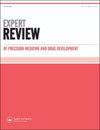多巴胺能和其他与奖励诱导的暴饮暴食、贪食症、神经性厌食症和暴饮暴食有关的基因
IF 1.2
Q4 PHARMACOLOGY & PHARMACY
Expert Review of Precision Medicine and Drug Development
Pub Date : 2021-11-15
DOI:10.1080/23808993.2021.1994186
引用次数: 0
摘要
饮食失调和肥胖是一个主要的全球公共卫生问题。本文旨在追踪不必要的饮食失调的神经化学机制和大脑奖励级联(BRC)中的靶向特定位点,以进行治疗干预。BRC多态性在功能连接和神经传递方面的改变可表现为暴饮暴食、神经性贪食和神经性厌食症,以及其他相关的饮食失调。个体腹侧被盖区(VTA)、伏隔核(NAc)和腹侧纹状体内多巴胺功能的变化导致与饮食行为不良相关的不同结果。目标是通过实施在BRC内诱导多巴胺稳态的新策略来减少不适应的饮食行为。临床医生确定遗传风险的严重程度,并确定药物或营养干预的多态性靶点。精确的KB220神经营养配方与缺乏的神经递质系统精确匹配,可能促进“多巴胺稳态”的长期发展,以治疗和预防暴饮暴食、贪食症和神经性厌食症。本文章由计算机程序翻译,如有差异,请以英文原文为准。
Dopaminergic and other genes related to reward induced overeating, Bulimia, Anorexia Nervosa, and Binge eating
ABSTRACT Introduction Eating Disorders and Obesity are a primary global public health concern. Areas Covered This article aims to trace the neurochemical mechanisms of unwanted eating disorders and target specific loci, within the Brain Reward Cascade (BRC) for therapeutic interventions. Changes due to BRC polymorphisms in functional connectivity and neurotransmission can manifest as overeating, Bulimia Nervosa, and Anorexia Nervosa, and other related eating disorders. Expert opinion Variations in dopamine function within the Ventral Tegmental Area (VTA), Nucleus Accumbens (NAc), and Ventral Striatum of individuals result in different outcomes related to maladaptive eating behaviors. The goal is to reduce maladaptive eating behaviors by implementing novel strategies that induce Dopamine Homeostasis within the BRC. Clinicians determine genetic risk severity and identify polymorphic targets for either pharmaceutical or nutraceutical interventions. Precision neuro-nutrient formulations of KB220 (Research ID Code) matched precisely to deficient neurotransmitter systems may promote the long-term development of ‘dopamine homeostasis’ to treat and prevent overeating, Bulimia, and Anorexia Nervosa.
求助全文
通过发布文献求助,成功后即可免费获取论文全文。
去求助
来源期刊

Expert Review of Precision Medicine and Drug Development
PHARMACOLOGY & PHARMACY-
CiteScore
2.30
自引率
0.00%
发文量
9
期刊介绍:
Expert Review of Precision Medicine and Drug Development publishes primarily review articles covering the development and clinical application of medicine to be used in a personalized therapy setting; in addition, the journal also publishes original research and commentary-style articles. In an era where medicine is recognizing that a one-size-fits-all approach is not always appropriate, it has become necessary to identify patients responsive to treatments and treat patient populations using a tailored approach. Areas covered include: Development and application of drugs targeted to specific genotypes and populations, as well as advanced diagnostic technologies and significant biomarkers that aid in this. Clinical trials and case studies within personalized therapy and drug development. Screening, prediction and prevention of disease, prediction of adverse events, treatment monitoring, effects of metabolomics and microbiomics on treatment. Secondary population research, genome-wide association studies, disease–gene association studies, personal genome technologies. Ethical and cost–benefit issues, the impact to healthcare and business infrastructure, and regulatory issues.
 求助内容:
求助内容: 应助结果提醒方式:
应助结果提醒方式:


